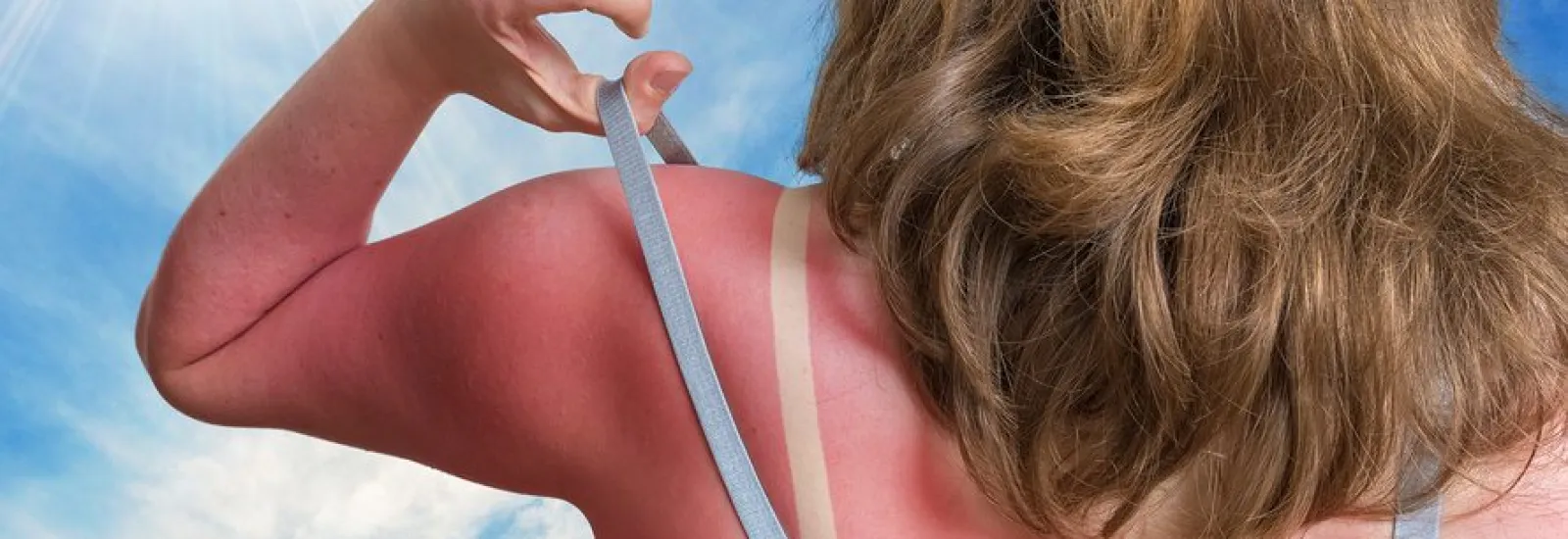
Skin cancer: Know your risks
Skin cancer according to the American Cancer Society (ACS) is the most common type of cancer in the United States. In fact more cases are diagnosed each year than all other types of cancer combined. Over 5 million people are treated for some type of skin cancer each year.
The main types of skin cancer are actinic keratoses (AK) which are precancerous lesions that may develop into cancer; basal cell carcinoma (BCC) the most common type of cancer and the most easily curable; Squamous cell carcinoma (SCC) and melanoma the most deadly form. Though melanoma only accounts for about one percent of cancers it causes over 9000 deaths a year.
Fortunately skin cancer is also one of the most preventable types of cancer. Knowing your risk is the first step to avoiding it.
Here are seven major risk factors for skin cancer:
1. The amount of time you spend in the sun whether at work or at play
Skin cancer is caused by exposure to ultraviolet radiation from the sun. The two most damaging types are UVA and UVB. UVA is responsible for most tanning and is about 95 percent of the radiation we receive from the sun while UVB rays cause sunburns. However both UVA and UVB can damage your skin and you should limit your exposure to both types.
2. Getting sunburned especially when you were a child

According to research by the American Association for Cancer Research (AACR) having five or more serious sunburns during childhood can increases your risk of developing skin cancer by up to 80 percent.
3. Fair coloring: Light skin that freckles or burns easily light eye color and red or blond hair
There are six basic skin types and they can be numbered based on how likely each type is to burn during sun exposure:
- Always burns and never tans.
- Burns easily and tans minimally.
- Burns moderately and tans gradually to light brown.
- Burns minimally and always tans well to moderately brown.
- Rarely burns and tans profusely to dark.
- Never burns with deeply pigmented skin.
Types I and II are considered fair coloring and those with this coloring are at the greatest risk. However all skin types are a risk of damage from the sun and any skin type may develop cancer.
4. Many moles and certain types of moles
According to the ACS individuals with many moles are at a greater risk for skin cancer. If you have moles have them checked by a dermatologist annually and see your doctor if you notice a change in one or more of your moles.
5. Having family members who have or have had skin cancer
If you have a family member with skin cancer you have a higher risk of developing it too. That risk is even greater if the family member is an immediate relative – mother father or sibling.
6. A history of regularly tanning or burning your skin outside or in a tanning bed/booth
Your risk of developing skin cancer is directly related to the amount of time you have spent in the sun. Sunbathing is not good for your skin and a tan is actually your skin’s way of telling you it has been damaged. Tanning beds are no safer than sunlight since they emit UV rays.
7. A previous skin cancer diagnosis
If you have had any type of skin cancer you are more likely to develop it again. That’s why it is so important to have regular screenings with your dermatologist.
Knowing your risk is important since if discovered early most skin cancers are curable. Once you know your risks there are many things you can do to reduce them. Limiting your time in the sun applying sunblock every day wearing protective clothing and sunglasses avoiding tanning beds and performing a monthly skin exam to check for changes in your skin or moles can all help protect you. If you are concerned about skin cancer contact Reid Health today to schedule an appointment with a specialist.

